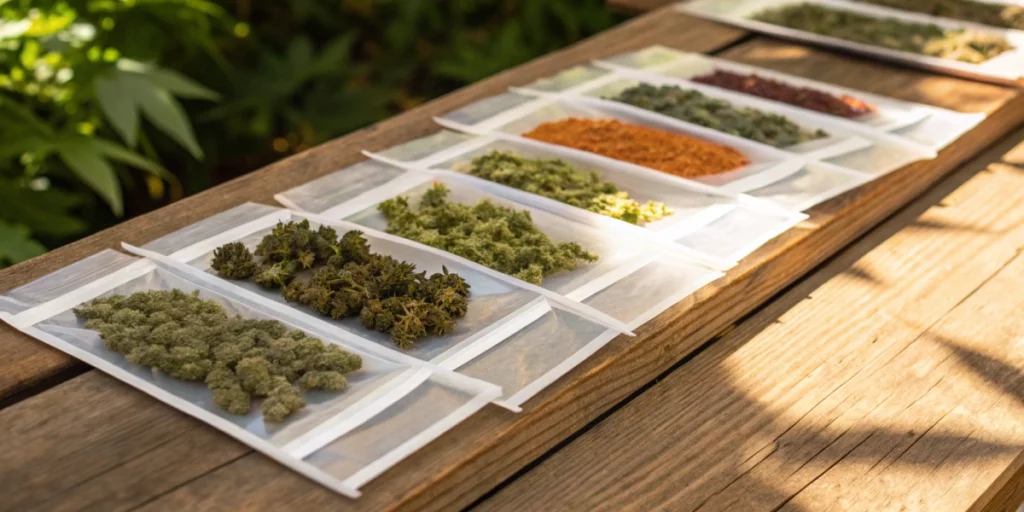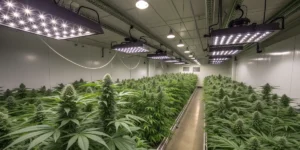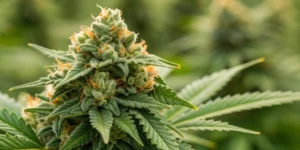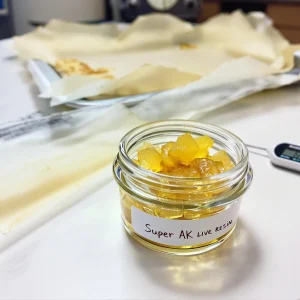Exploring New Mexico’s Seed Laws
State Licensing Requirements
The New Mexico Department of Health issues licenses for businesses that deal with cannabis seeds. Licensed producers must follow strict state guidelines to ensure seed quality and legal compliance. Applicants face fees, background checks and facility inspections. Moreover, business owners need to renew their license every year by submitting updated documentation. Businesses also provide floor plans, security plans and staff training records. Regulators may inspect any time and review records before granting or renewing approval.
To maintain a license, operators must meet packaging and labeling rules that track seed origin and batch numbers. They also log all incoming and outgoing seed transfers in a state database. This traceability helps prevent illegal sales and supports public safety. Failure to update records or comply with security standards can result in fines or suspension. Therefore, licensed businesses often hire compliance officers to manage audits and prepare for inspections.
Home Cultivation Limits
Residents aged 21 or older may cultivate cannabis plants at home, but the state caps the total number of mature plants per household. New Mexico allows up to six mature plants, or twelve if two adults share a residence. These limits ensure private growers stay within personal-use guidelines and avoid unlicensed distribution. Growers must keep plants out of public view, in a locked and enclosed space to prevent unauthorized access.
Homes with multiple adults must still follow the combined plant cap; roommates cannot each grow a separate set. Caregivers for medical patients may cultivate up to twelve mature plants per qualifying patient. All growers need to secure growing areas with fences or indoor lockboxes. Light pollution and odors must also stay contained to respect neighbors. If authorities find violations, they can impose fines or confiscate plants.
Seed Purchase Regulations
Whether a recreational or medical user, you must obtain seeds from licensed sources. It remains illegal to buy seeds from unlicensed retailers or dealers. Licensed dispensaries list approved seed varieties that meet state potency and testing standards. Seed packages include potency data, genetics information and germination rates to help growers choose the right option for their setup.
Online purchases also require verification of age and residency. Dispensaries or seed banks often ask for an ID upload and proof of New Mexico address before shipping seeds. For example, if you’re ordering popular strains like Durban Poison Fem, expect to provide accurate documentation to comply with state regulations. Shipping companies must label packages discreetly and confirm delivery only to the purchaser. Attempting to import seeds without proper licensing or shipping permits can trigger seizures at the border or legal penalties.
Where to Buy in New Mexico
Licensed Dispensaries
You can find licensed dispensaries in cities such as Albuquerque, Santa Fe and Las Cruces. Dispensary staff can guide you to seed strains suited for your climate and growing skills. Many locations display seed collections in glass cases, allowing hands-on inspection. Budtenders often share tips on germination success and recommend climate-appropriate varieties.
Prices vary by strain and seed type, with premiums for feminized or auto-flowering seeds. Discounts may apply for medical patients who hold a valid registry card. Seasonal promotions often bundle seeds with growing accessories. When you purchase in person, you avoid shipping fees and can ask questions on the spot about any concerns.
Online Seed Banks
Online seed banks offer a wider selection of genetics, including rare or heritage strains—ideal for those interested in Germinating Old Cannabis Seeds. These platforms ship discreetly across state lines to New Mexico addresses after verifying age and residence. Growers can compare dozens of strains side by side, read user reviews, and view lab reports before ordering. Payment methods range from credit cards to cryptocurrency, depending on the vendor.
However, shipping times can vary from a few days to several weeks. You may face delays if postal services hold seeds for inspection. To minimize risk, choose seed banks with strong customer feedback and reliable tracking systems. Also consider vendors that offer germination guarantees or replacements if seeds fail to sprout.
Local Breeder Events
Seeds also appear at local cannabis expos, farmers markets and breeder meet-ups. These events let you chat directly with breeders and fellow growers. You get insight into each strain’s performance in New Mexico’s unique altitude and weather. Breeders often sell small test batches at reduced prices so growers can trial new genetics.
Event schedules vary by season, but spring and early summer host the bulk of outdoor festivals. Attendance may require proof of age, and some gatherings limit non-residents. Bring cash for vendors who do not accept cards, and a small cooler if you want fresh clones alongside seeds. Keep an eye on social media or local grower forums to catch announcements.
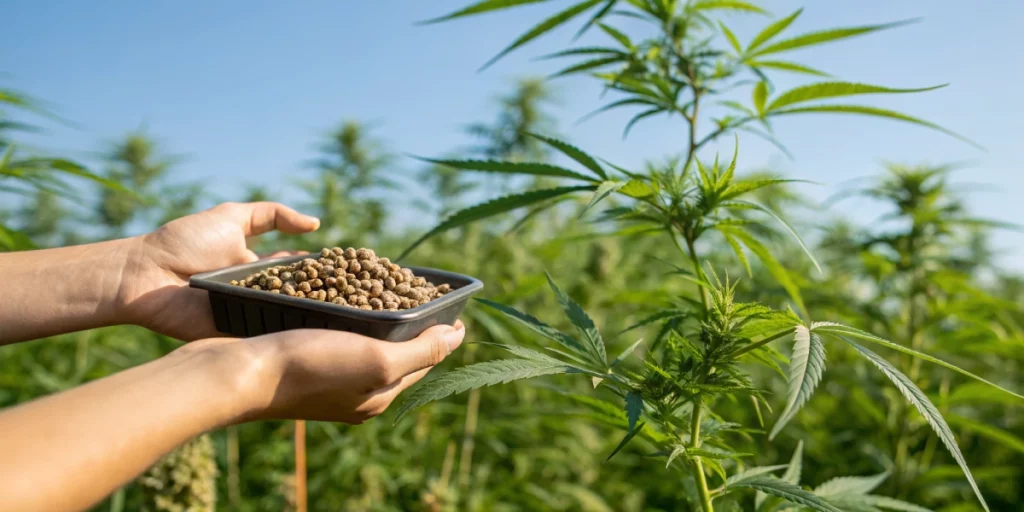
Popular Strains Suited to NM Climate
Heat-Tolerant Varieties
Heat waves in New Mexico arrive early and linger late into the season. Strains like Durban Poison and OG Kush often thrive under intense sun and high daytime temperatures. These genetics develop sturdy stems and smaller, more compact buds that resist heat stress. Their shorter flowering periods also help growers finish before the hottest months kick in.
Additionally, sativas with genetic ties to equatorial regions often handle heat well. They maintain resin production even when afternoon temperatures climb past 90°F. A grower watching weather patterns can adjust watering schedules to avoid over-hydration in cooler mornings. Overall, choosing heat-tolerant seeds lets you harvest reliable yields despite summer surges.
Drought-Resistant Options
Drought resistance matters when soil moisture drops under prolonged sun exposure. Strains like Blue Dream and Super Silver Haze adapt to drier soils with deeper root systems. These roots seek out hidden moisture layers and support steady growth with fewer waterings. Growers using drip irrigation systems can target root zones and reduce overall water use.
Furthermore, landrace strains from arid regions—such as Afghanica—display natural drought tolerance. Their small leaves and resinous buds minimize transpiration. By mixing these seeds with local hybrids, you build a garden that copes with New Mexico’s seasonal drought. In combination with mulched soil beds, you preserve moisture and cut down on irrigation needs.
Outdoor vs. Indoor Picks
Outdoor growers benefit from full sun exposure but face challenges like wind, pests and uneven climate swings. Auto-flowering seeds from Ruderalis hybrids suit outdoor spaces because they flower on a set timer, independent of daylight hours. This trait helps avoid mold during sudden rain or humidity spikes.
Indoor growers retain full control over temperature, light and humidity. Photoperiod seeds work well under LED or HPS lamps, letting cultivators adjust the light cycle to fine-tune plant size and yield. Indoor setups also reduce pest risks and extend growing seasons. For beginners, starting indoors offers a gentler learning curve before moving crops outside.
Best Practices for Germination
Soil Preparation Tips
Start germination by choosing a light, airy soil mix with plenty of drainage. You can blend peat moss, perlite and coco coir to create a fluffy bed that retains moisture without waterlogging. Fill small pots or seedling trays and moisten the mix until it feels like a wrung-out sponge.
Next, plant each seed about a quarter inch deep and cover gently with soil. Label each spot to track strain performance. Place the trays in a warm spot—around 70 to 75°F—away from direct light. Check soil moisture daily and mist lightly to keep the upper layer damp. Avoid overwatering, which can cause seeds to rot or sprout weak roots.
Temperature and Humidity Control
Maintaining the right climate speeds up germination. Aim for 70 to 80°F with relative humidity near 70 percent. You can use a small propagation dome or plastic wrap to trap moisture and heat. Just remember to vent the dome daily to prevent mold buildup.
Using a digital thermometer and hygrometer helps you monitor conditions precisely. If your grow space runs hot, introduce a small fan to circulate air and lower humidity. Conversely, a humidifier can boost moisture levels in dry environments. For growers cultivating strains like OG Kush Feminized, maintaining this consistency ensures seedlings emerge quickly and develop stronger roots.
Lighting Considerations
Once seeds sprout, they need gentle light to avoid stretching. Place them under fluorescent grow lights or low-wattage LEDs about two to three inches above the canopy. Keep lights on for 18 hours a day to simulate long summer days.
Also, rotate trays daily to encourage even growth and prevent seedlings from leaning toward a single light source. Avoid intense beams until seedlings develop at least two sets of true leaves. After that, you can gradually raise light intensity or move to stronger fixtures to support healthy vegetative growth.
Harvesting and Curing in New Mexico
Ideal Harvest Windows
Timing your harvest maximizes potency and flavor. In New Mexico, most outdoor varieties mature between late September and early October. Keep an eye on trichomes with a magnifying glass: clear trichomes indicate immaturity, while cloudy ones signal peak THC levels. Amber trichomes show a shift toward CBN and more sedative effects.
Plan to harvest on a dry, overcast morning to reduce plant stress and preserve terpene profiles. Cut branches and move them immediately to your drying area. Cooler overnight temperatures in late fall can also help lock in aromas when you control airflow and humidity below 60 percent.
Drying Techniques
Hang trimmed branches upside down in a dark, well-ventilated room. Maintain temperatures between 60 and 70°F with humidity around 50 percent. Use small fans to keep air moving, but avoid direct airflow on buds, which can dry them too quickly and diminish terpenes.
After seven to ten days, smaller stems should snap rather than bend when you handle them. At that point, remove buds from branches and prepare them for jars. A slow, controlled drying process preserves flavor and avoids mildew risks.
Proper Curing Methods
Curing transforms freshly dried buds into smooth, flavorful flower. Place buds loosely in glass jars filled no more than half full to allow air circulation. For the first week, open jars twice daily for five to ten minutes to release moisture and replenish oxygen.
Monitor humidity inside jars with small digital packs or a hygrometer. Aim for 60 to 62 percent relative humidity for optimal terpene and cannabinoid retention. After two weeks, you can reduce jar openings to once every couple of days. A full cure often takes four to eight weeks but rewards patience with richer aromas and a cleaner smoke.
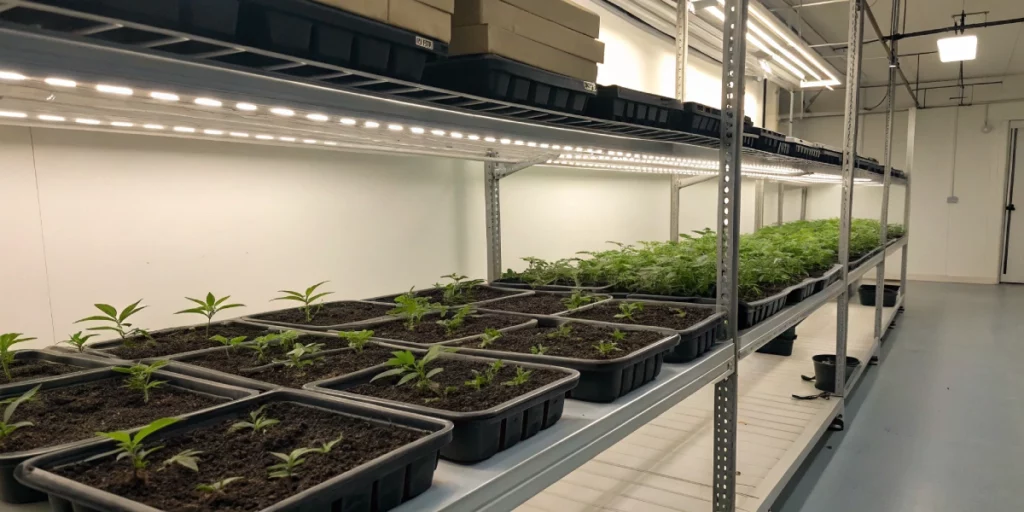
FAQs about cannabis seeds New Mexico
Can I mail-order seeds to NM?
Yes, you can. Licensed online seed banks ship discreet packages to New Mexico addresses after verifying age and residency. You must provide a valid ID and proof of local address. Shipping times vary, so expect arrivals between a few days and several weeks. Always buy from vendors with strong reviews and tracking options. That way, you minimize the chance of lost or seized seeds.
Do New Mexico seeds differ genetically?
Seeds sold in New Mexico must meet state testing and potency guidelines, but genetics come from global breeders. You’ll find local dispensaries offering region-adapted strains alongside internationally developed hybrids. Licensed vendors label seed packs with genetic lineage and lab results. While seeds may undergo local breeding trials, the underlying genetics often match those available in other states, including popular options like Durban Dew.
How many plants can I grow at home?
You can cultivate up to six mature plants per household, or twelve if two adults co-habit the same residence. Medical caregivers may grow up to twelve mature plants per qualifying patient under the medical cannabis program. All plants must remain out of public view in a locked, enclosed space. For example, growers looking for a productive and reliable option might consider Auto Euforia, a strain well-suited for both personal and medical cultivation. Exceeding these limits risks fines, plant confiscation, or legal action.

